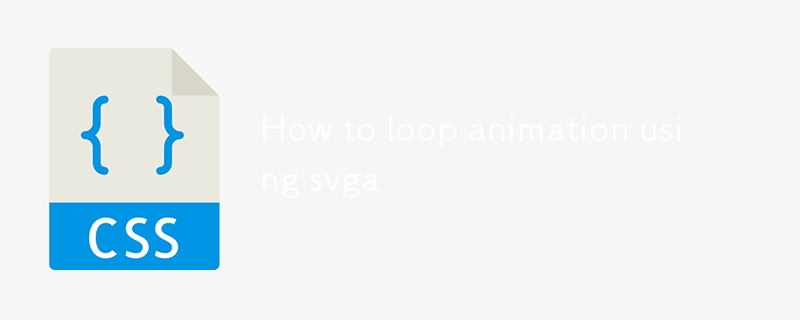
This article provides guidance on creating looping SVG animations. It covers essential steps, including using vector editing software, setting the "Loop" option during export, and aligning the first and last keyframes to ensure a seamless l

Scalable Vector Graphics (SVGAs) are an excellent format for creating animated graphics that are both lightweight and scalable. SVGAs can be used to create loop animations, which are animations that repeat continuously.
To create a looping SVG animation, you can use any vector editing software, such as Adobe Illustrator or Inkscape. Once you have created your animation, you can export it as an SVG file.
When you export your SVG file, be sure to select the "Loop" option in the export dialog box. This option will cause the animation to repeat continuously when it is played.
To create a looping animation using SVGA, you will need to use a vector editing software program that supports SVG. Once you have opened your vector editing software, you can begin creating your animation.
First, you will need to create the keyframes for your animation. Keyframes are the points in your animation where the animation changes. You can create keyframes by clicking on the "Add Keyframe" button in your software's timeline.
Once you have created your keyframes, you can begin adding your animation. You can add animation to your SVG by using the "Transform" panel in your software. The Transform panel allows you to move, rotate, and scale your SVG objects over time.
To create a looping animation, you will need to make sure that your last keyframe is the same as your first keyframe. This will create a seamless loop that will play continuously.
There are a few techniques that you can use to create a smooth and seamless SVGA loop animation. First, you should make sure that your keyframes are evenly spaced. This will help to prevent your animation from looking jerky.
Second, you should use easing to create a more natural-looking animation. Easing is the process of slowing down the animation at the beginning and end of each keyframe. This can help to create a smoother, more fluid animation.
Finally, you should test your animation regularly to make sure that it is looping smoothly. You can do this by exporting your animation as a video file and playing it back. If you see any jumps or glitches in the animation, you can adjust your keyframes or easing to smooth them out.
The above is the detailed content of How to loop animation using svga. For more information, please follow other related articles on the PHP Chinese website!




